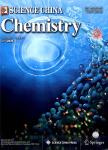Recent advances in Raman spectroelectrochemistry on single-crystal surfaces
作者机构:State Key Laboratory of Physical Chemistry of Solid SurfacesCollege of Chemistry and Chemical EngineeringCollege of EnergyiChEMXiamen UniversityXiamen 361005China Innovation Laboratory for Sciences and Technologies of Energy Materials of Fujian Province(IKKEM)Xiamen 361005China Beijing National Laboratory for Molecular SciencesCAS Research/Education Center for Excellence in Molecular SciencesCAS Key Laboratory of Molecular Nanostructure and NanotechnologyInstitute of ChemistryChinese Academy of SciencesUniversity of Chinese Academy of SciencesBeijing 100190China
出 版 物:《Science China Chemistry》 (中国科学(化学英文版))
年 卷 期:2023年第66卷第12期
页 面:3360-3371页
核心收录:
学科分类:081704[工学-应用化学] 07[理学] 0817[工学-化学工程与技术] 08[工学] 070203[理学-原子与分子物理] 070302[理学-分析化学] 0703[理学-化学] 0702[理学-物理学]
基 金:supported by the National Key Research and Development Program of China (2020YFB1505800) the National Natural Science Foundation of China (21925404,22005130,and 21991151) the China Postdoctoral Science Foundation (BX20220187)
主 题:single-crystal electrode shell-isolated nanoparticle-enhanced Raman spectroscopy interfacial structures adsorption
摘 要:Benefiting from a principally contaminant-free and well-defined surface,single-crystal electrodes offer new insights into interfacial processes and are important in *** early impetus for using single-crystal electrodes in electrocatalysis was to investigate the surface structure at the atomic level for the reactions that are sensitive to the *** studies were usually performed in an ultra-high vacuum with atomic force microscopy(AFM),scanning tunneling microscope(STM),and X-ray methods to avoid the ***,such characterizations are limited in their ability to identify chemical species definitively,a limitation that has similarly plagued the study of *** advances in shellisolated nanoparticle-enhanced Raman spectroscopy(SHINERS)have enabled the detection of reaction intermediates on singlecrystal electrodes,in which shell-isolated nanoparticles on the single-crystal electrode can enhance the Raman signal from the surface,without changing the surface structure and electrochemical ***,this work aims to review recent advances in Raman spectroelectrochemical studies on single-crystal electrode *** discussion focuses on how SHINERS technology has enabled the effective detection of intermediate species and,when combined with the electrochemical method,has yielded novel insights into the dynamic evolution of surface structure and electrocatalytic reaction ***,the challenges and future of single-crystal electrodes are introduced.



